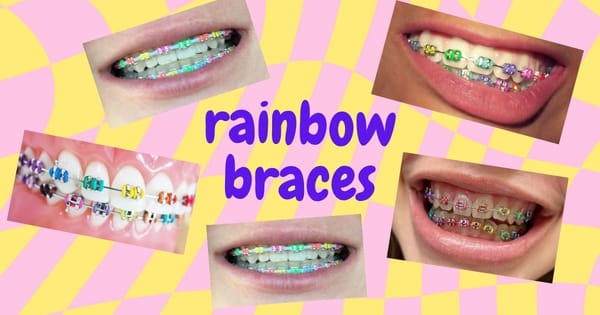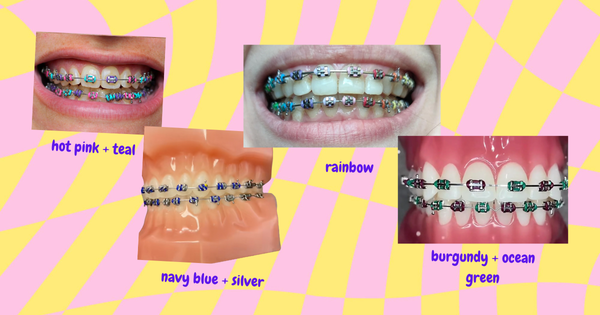Did "Love Is Blind" Star Jimmy Get Veneers?

Fans of the hit Netflix show Love is Blind are used to relationship drama, but lately, some are speculating about a different kind of transformation – contestant Jimmy’s teeth.
Did "Love Is Blind" star Jimmy get veneers?
Based on photographic evidence, it's highly likely that Jimmy received veneers on his two front teeth. Before-and-after photos reveal a noticeable change in the size and shape of these teeth, suggesting cosmetic dental work.
However, the rest of his teeth remain relatively unchanged, which is atypical for veneer procedures aiming for a completely transformed smile.
Key Takeaways:
- Analysis of photos suggests Jimmy likely has veneers on his two front teeth.
- His case raises concerns about the compatibility of veneers with bruxism (teeth grinding), as evidence suggests he may have this condition.
- Placing veneers on teeth affected by bruxism without addressing the underlying issue can lead to complications like fractures.
- Alternative treatment options like crowns, orthodontics, or nightguards may be more suitable for individuals with bruxism seeking cosmetic dental improvements.

Analyzing the Evidence: Veneers or Natural Teeth?
Comparing photos of Jimmy's smile from different periods reveals a distinct change in his two front teeth.
These teeth, known as the central incisors, appear significantly larger and more uniform in recent images, suggesting possible dental work.
Furthermore, older photos show one of his central incisors with an unusual wear pattern.
The edge of the tooth appears chipped or slanted, which could indicate bruxism, a condition characterized by teeth grinding or clenching.
This type of wear is often seen in individuals who grind their teeth, as the repetitive friction gradually wears down the biting surfaces.
It's crucial to differentiate this wear pattern from damage caused by a one-time impact, such as a fall or sports injury.
Those incidents typically result in more defined chips or fractures, whereas the wear seen in Jimmy's photos appears more gradual and consistent with bruxism.
This distinction is important for determining the best course of treatment, as addressing bruxism often requires a different approach than simply masking the cosmetic consequences with veneers.

Veneers and Bruxism: A Risky Combination?
While veneers offer a transformative solution for enhancing smiles, their compatibility with bruxism is a topic of debate within the dental community.
Bruxism, often triggered by stress or bite misalignment, exerts excessive force on teeth, leading to wear, chipping, and even fractures.
Placing veneers on teeth already subjected to these forces without addressing the root cause of bruxism can be a recipe for complications.
Think of it in terms of "cow" versus "rat" chewing patterns, a somewhat humorous but apt analogy used by some dental professionals. "Cow chewers" grind their teeth in a side-to-side motion, wearing down their teeth evenly over time.
"Rat chewers," on the other hand, tend to bite and clench in a more vertical manner, often concentrating the force on their front teeth.
If a "cow chewer," someone whose natural tendency is to grind their teeth down evenly, receives veneers that extend beyond their natural bite, those veneers become the primary point of contact during grinding.
This concentrated force can place excessive stress on the veneers and the underlying teeth, significantly increasing the risk of chipping, fracture, or debonding.
To illustrate this point, consider a case study encountered during my residency.
A patient presented with severely worn-down front teeth due to years of untreated bruxism.
His dentist, solely focused on addressing the cosmetic aspect, placed two long veneers on his central incisors without addressing the underlying bruxism.
Within a year, one of the veneers fractured straight down the middle.
This unfortunate outcome highlights a critical point: veneers primarily address cosmetic concerns and aren't designed to withstand the excessive forces associated with bruxism.
Addressing the root cause of bruxism is crucial for the long-term success and longevity of any dental restorations, including veneers.

Alternatives to Veneers for Bruxism
While veneers might not be the ideal solution for individuals with bruxism, several alternative treatments can address both the cosmetic concerns and the underlying grinding habit.
These options aim to protect teeth from further damage while potentially enhancing their appearance:
1. Crowns: Unlike veneers, which only cover the front surface of teeth, crowns encase the entire visible portion, providing superior strength and protection for teeth prone to grinding. Crowns are often recommended for teeth with extensive wear, large fillings, or a history of fracture, offering a more durable solution than veneers.
2. Orthodontics: Addressing bite misalignment, a common contributor to bruxism, is often best achieved through orthodontics. Braces or clear aligners can gradually reposition teeth, improving the bite and potentially reducing or eliminating teeth grinding. While this method focuses on the functional aspect, it can also lead to a more aesthetically pleasing smile as a bonus.
3. Nightguards: Also known as occlusal guards or bite splints, these custom-made appliances are worn during sleep to prevent teeth from grinding against each other. Nightguards provide a physical barrier that absorbs the force of bruxism, protecting teeth from further wear and tear. While not a direct cosmetic solution, nightguards can prevent further damage and preserve existing dental work.
Choosing the most appropriate treatment option depends on individual needs, the severity of bruxism, and cosmetic goals.
A thorough dental examination, including bite analysis and a discussion of lifestyle habits, is crucial for determining the best course of action.
Final Thoughts
Speculation about celebrity dental work is a popular pastime, but it also presents an opportunity to educate ourselves about dental health and treatment options.
While Jimmy from Love is Blind may be sporting a new smile, his case highlights a critical consideration for anyone contemplating veneers: the potential impact of bruxism.
Veneers, though effective in masking imperfections and creating dazzling smiles, are not a one-size-fits-all solution, particularly for individuals who grind their teeth.
Addressing the underlying causes of bruxism through methods like nightguards, orthodontics, or even stress management is paramount for ensuring the longevity and success of any dental restoration.
Ultimately, the decision to pursue any cosmetic dental procedure should be made in close consultation with a qualified dental professional.
A thorough evaluation considering bite alignment, habits like bruxism, and long-term oral health goals is crucial for achieving a smile that is not only aesthetically pleasing but also healthy and sustainable.





